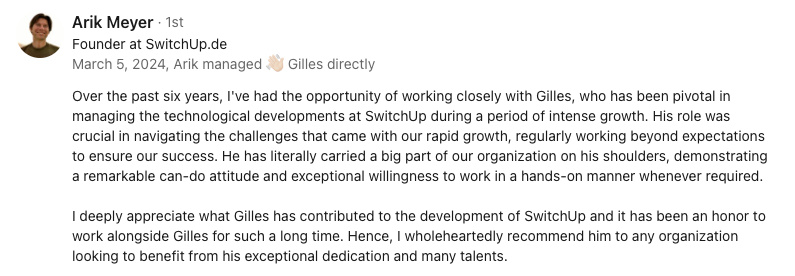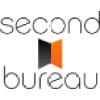Abstract:
The article addresses the complexities and opportunities of navigating cultural diversity in education, emphasizing the importance of understanding and integrating cultural contexts to create inclusive and effective learning environments. Using examples from experiences in China and Europe, it highlights how aligning teaching methods and digital tools with cultural backgrounds enhances student engagement and learning outcomes. The article underscores the necessity of involving local communities and leaders in the design of educational technologies to ensure cultural relevance and acceptance. It discusses challenges such as language barriers and the need for content adaptation, advocating for strategies like cultural competency training, localization, and flexible content delivery. Through examples like Kahoot! and Duolingo, the article illustrates successful culturally adapted tools that foster deeper connections and sustainable learning. By embracing cultural diversity, educators can transform challenges into opportunities, enriching the educational experience and encouraging a more inclusive approach to teaching.
Navigating cultural diversity in education can be a bit of a puzzle. In classrooms, both teachers and students face the challenge of bridging cultural gaps. Whether it's adjusting teaching methods to suit different backgrounds or overcoming language barriers, these challenges can feel overwhelming. But with the right approach, they can lead to more enriching learning experiences. This article explores how understanding cultural contexts can change education. In China, cultural teaching methods made classrooms more engaging. By embracing diversity, educators can turn challenges into opportunities for inclusive and effective learning. Let's explore practical strategies to make education more inclusive for everyone.
Understanding cultural contexts
Cultural backgrounds' impact on education
Cultural backgrounds significantly influence how students learn and engage. Recognizing and integrating these differences can boost students' success. I’ve observed this firsthand in culturally diverse settings. For example, in China, adapting teaching methods to align with students’ cultural expectations has shown improvements in participation and understanding. While critics argue that policies promoting multiculturalism often lack genuine implementation under authoritarian regimes, the very presence of such efforts highlights the importance of adapting education to cultural contexts, as noted by Henderson and Gay. By embracing these adaptations, educators can create more inclusive and effective learning environments.
Europe’s diverse cultural landscapes: challenges and opportunities
Europe's cultural diversity brings unique challenges and opportunities in education. It's more than just a buzzword; it demands real strategies to fully benefit from it. Europe’s mix of languages, traditions, and histories requires varied educational approaches. However, socio-economic barriers and the digital divide also play a significant role in shaping these educational landscapes.
- Different learning needs: Students from multicultural areas may have unique learning speeds and preferences.
- Language issues: Multilingual classes need creative communication methods.
- Historical, social, and economic contexts: Understanding these helps tailor teaching materials.
Recognizing these factors allows educators to customize strategies to local needs. Digital tools offer scalable solutions. They can be personalized to close educational gaps, ensuring equitable learning opportunities. The Journal of Multicultural Education points out that these tools are most effective when culturally aligned, turning diversity into an asset.
Aligning digital tools with cultural contexts
To maximize the benefits of digital education tools, they must align with local cultures. McLoughlin and Oliver emphasize the importance of this alignment. A project in Berlin demonstrated this by tailoring educational technology to include local culture and history. This approach increased student engagement and made education more relatable. When digital tools reflect users' cultural contexts, they create more meaningful educational experiences. According to a study by the European Commission, culturally tailored digital tools have shown a 25% increase in student engagement. Next, we'll discuss the specific needs of underprivileged communities to see how these tools can be adapted further.
Designing culturally relevant tools
Strategies for cultural relevance
Creating educational technologies that resonate with diverse cultures is key to their success. Here are some strategies:
- Conducting cultural needs assessments helps understand the educational challenges, norms, and learning preferences of different areas. This ensures tools are useful and accepted locally.
- Involving local stakeholders, such as educators, students, and leaders, in the design process ensures tools meet community needs. This participatory method builds ownership, making tools more likely to be accepted and used effectively. In a Berlin project, an educator noted that integrating community ideas into tech tools made teachers and students more connected and committed.
- Creating inclusive content involves more than just translation; it's about aligning stories and values with users. In a Lisbon project, developers added local history and stories to educational content, boosting student engagement. When educational materials reflect students' cultures and identities, they become more relatable and meaningful, improving learning experiences.
Successful adaptations
Several digital education tools have adapted well to European cultures. Kahoot!, a game-based learning platform, lets teachers create quizzes based on local themes and languages. This customization maximizes cultural relevance, showing that tools engage students better when they reflect local values.
Duolingo, a language-learning app, integrates cultural nuances into courses, enriching language learning. This approach not only helps students learn languages but also deepens their understanding of associated cultures, making learning more enjoyable.
Interactive platforms like ThingLink and iCulture offer deeper cultural immersion. They use interactive maps and modules to explore histories and traditions, like the Renaissance in Italy or Spanish festivals. Users report increased engagement when technologies include cultural narratives, highlighting the importance of cultural understanding in education.
In summary, successful customization of educational tools enhances learning and fosters a sense of connection and relevance among learners. Working with communities and adapting to cultural contexts are key to achieving this.
Collaborating with local communities
Engaging community leaders
Working with community leaders is crucial for creating culturally sensitive educational tools. By involving them, the design and implementation process becomes more inclusive and reflective of local values. This ensures tools are relevant and welcomed by users.
- Cultural alignment: Leaders help ensure tools resonate with community norms and values, leading to higher acceptance.
- Community trust: Engagement builds trust, easing implementation as leaders support new technologies.
- Sustainability: With local backing, projects are more likely to last.
Involving community leaders enriches the development process, using their cultural insights and needs. This approach is supported by researchers like McLoughlin and Oliver, who note its positive outcomes.
Participatory design and feedback loops are effective strategies. Participatory design invites community input early on, ensuring tools meet local educational and cultural needs. Feedback loops maintain communication between developers and the community, allowing tools to be improved based on real-world use and feedback.
Projects in Europe show how ongoing dialogue leads to effective solutions. By using these strategies, developers can ensure educational tools are designed for and with the community, leading to impactful outcomes.
Examples of successful collaborations highlight the impact of community involvement. In Portugal, a partnership with local schools created a digital history curriculum emphasizing local narratives, enhancing student engagement. In Spain, a project involved educators and leaders in developing an app that included regional dialects and idioms, improving language learning and satisfaction. These examples show the benefits of including community voices in technology development.
Methods for community engagement
Surveys, focus groups, and direct involvement are practical ways to engage communities in designing educational tools. These methods ensure tools align with community needs and preferences.
- Surveys: Gather broad feedback on community priorities.
- Focus groups: Enable deeper discussions for nuanced insights.
- Direct involvement: Include community members in the design phase for cultural relevance.
These methods are not only important for designing relevant tools but also for maintaining their relevance. Ongoing feedback ensures tools continue to meet community needs. Iterative feedback cycles help educational technologies evolve to stay aligned with cultural contexts, enhancing acceptance.
Communities invested in the design process are more likely to embrace these tools. A World Bank report notes that engaged communities show higher adoption rates and success in educational initiatives. In southern France, collaboration between schools and developers increased tool acceptance, as solutions felt tailor-made. These cases reinforce the importance of community engagement for successful educational technologies.
Navigating cultural challenges in digital education
Language and content complexities
Adapting digital education tools to diverse cultures involves challenges, like language barriers and content adaptation. It's not just about translating text but ensuring cultural nuances and dialects are respected. This balance is crucial, as noted by UNESCO, to maintain educational integrity while making content accessible and relatable.
Aligning with educational standards
Aligning tools with diverse educational standards is another challenge. Different systems have unique benchmarks. Misalignment can lead to ineffective tools that educators and students reject. The Commonwealth of Learning highlights cases where poor adaptation led to worse educational outcomes. Successful adaptation means understanding these frameworks and tailoring tools to meet them.
Overcoming resistance and ensuring sensitivity
Resistance to change is another barrier. People are cautious about new technologies, especially if they seem foreign. This can be eased by designing tools that acknowledge and celebrate cultural differences. Henderson suggests that culturally aware technologies are more warmly received. In Berlin, involving communities in design transformed skepticism into support, showing the importance of cultural sensitivity.
Solutions and effective practices
Enhancing cultural competency
Cultural competency training for development teams is key to overcoming adaptation challenges. This training equips teams to design with cultural awareness, ensuring products are sensitive to target audiences' norms. The National Education Association recommends this training to create tools that are both technically sound and culturally resonant.
Importance of localization
Localization and translation are fundamental for making tools accessible. It's more than translating words; it involves adapting content to cultural contexts, increasing engagement. Dunn and Marinetti highlight that tools should speak the language of users to encourage meaningful engagement. Duolingo succeeds not just by translating lessons but by incorporating cultural idioms, making learning enjoyable.
Embracing flexible content delivery
Flexible content delivery is crucial to accommodate diverse learning styles. By offering content in various formats like video, text, and audio, tools can engage more learners. UNESCO notes that this approach ensures content is accessible and appealing to different educational backgrounds.
Strategic insights for tech executives
Integrating cultural sensitivity
Incorporating cultural sensitivity into educational technology strategies benefits tech executives by expanding markets and boosting user loyalty. Culturally sensitive designs lead to wider acceptance and greater user satisfaction. Data-driven decisions align product development with cultural goals, enhancing brand reputation.
Adapting products to cultural contexts builds brand reputation and fosters loyalty. Duolingo's use of culturally specific idioms in language courses improves user experiences, building trust and encouraging repeat use.
Sustainability and scaling benefits
Culturally adapted tools create sustainable educational outcomes. Aligning technologies with local cultures keeps platforms relevant. Local partnerships help scale technologies, integrating local insights and expertise. Benefits include:
- Access to regional knowledge.
- Increased credibility and trust.
- Enhanced content customization.
These partnerships enable swift adaptation and acceptance, as seen in successful European projects. Companies like Kahoot! demonstrate successful scaling through cultural adaptation. Customizing content with local relevance engages diverse students. Partnerships have also helped platforms like Edmodo promote international educational exchange, highlighting the strategic value of cultural adaptation.
Embracing cultural diversity in education enriches learning and fosters understanding. By recognizing diverse backgrounds, educators can turn barriers into inclusive opportunities. Whether adapting digital tools or involving community leaders, cultural alignment enhances engagement and belonging. Examples from Europe, China, and beyond show how culturally responsive teaching creates vibrant learning spaces. How can you incorporate cultural insights into your practices? Let's inspire others to join this inclusive journey.





